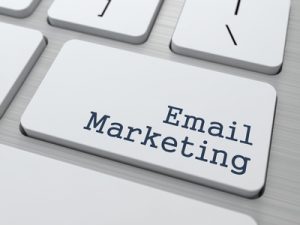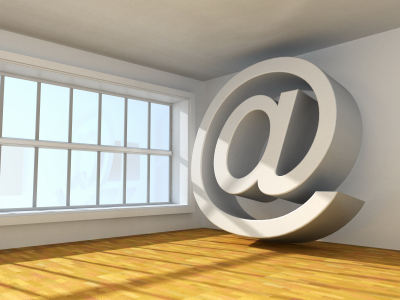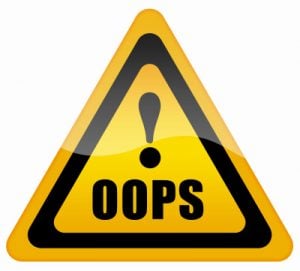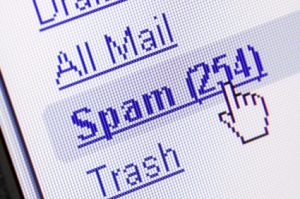 Boring old email – like the press release, many pundits have declared it dead…I beg to differ! It is true that other modes of communication, like texting, instant messaging, Twitter, etc., have proliferated. And it’s true that email “open rates” have declined.
Boring old email – like the press release, many pundits have declared it dead…I beg to differ! It is true that other modes of communication, like texting, instant messaging, Twitter, etc., have proliferated. And it’s true that email “open rates” have declined.
But here at eReleases, email remains our primary means of communication, and likely the most important in “converting” prospective customers into new customers. We have web chat available during office hours, and our phone is answered 24 x 7, but email communication is by far the most important way we serve many hundreds of customers each month.
I hope you enjoy the reviews below, where I cover email marketing, email customer service, and email pitching.
7 Tips on Writing the Perfect Welcome Email
The old cliché is true; you only get one chance to make a good first impression. This is as equally true online as it is in real life. Whether you are posting on social media, writing a blog post, or commenting on another thread, the impression that people get of you and your business will stick. Probably the most important example of this is the welcome email. When people sign up or subscribe, they should receive a welcome email from your business. What the emails says and its design will set the tone for what the customer should expect from you and the company. It should go without saying to avoid spelling errors, mistakes in grammar, or typing in ALL CAPS. That’s basically shouting at someone through the computer and nobody will be fond of it.
If you are struggling to pen the perfect welcome email, this article can help. Without further ado, here are 7 tips to writing the best welcome email.
1. Personalize—Your business wants to connect with your customers and your customers want to feel connected. One of the easiest and best ways to do that is to personalize the emails to them. Having their name at the top in the greeting goes a long way in cementing a great relationship.
2. Please and Thank You—Reminder: Your customers didn’t have to sign up for your emails; they wanted too. Be sure to thank them for trusting and supporting your business.
3. Subject Line—The standard “Welcome to Studio 16 Salon” is ok, but it won’t be eye-catching among the hundreds of other emails they get in a day. Punch it up and write something like, “Studio 16 Insider Trading: It’s not Illegal, We Promise!”
4. Discounts & Giveaways—As a bonus for your customers, consider offering a 10% off coupon for signing up for emails or do a free (small) product giveaway. Everyone likes free stuff.
5. Make Sure You Aren’t Spam—Some of the email filters out there are pretty strict. To ensure that your email is reaching their inbox, ask them to add you to their address book.
6. Words, Words, Words—When you are writing your email, limit the amount of words you use. Thank them for signing up, tell them what to expect in regard to frequency and content of future emails and add a picture. This is not the time to give them your entire business history.
7. Preferences—As an added feature, you can ask recipients to tell you their preferences regarding email content. Use this information to tailor your future correspondence to their interests.
Lastly be sure to send the welcome email as soon as someone signs up or subscribes. Many emails programs will automate this service, so take full advantage of it. There isn’t any point in sending welcome email months after someone has joined.
Email Marketing Plus Social Media Equals Astronomical Reach
Email marketing and social media go together like peanut butter and chocolate, like peas and carrots, like…a bunch of other stuff that goes well in pairs. At least, they can if you have the right strategy, as it’s sometimes hard to figure out how to incorporate the two.
It seems easy enough: just link your social media sites to your email marketing and send people who signed up to your email campaign links to your social media. But you can’t stop there or you’re doomed – eventually you’re going to just be “preaching to the choir” so to speak. And your audience is going to get pretty bored hearing the same messaging from you in their email accounts and on their social media sites.
To help you expand the reach of your dual campaign, here are a handful of pointers.
 Call to Action
Call to Action
Getting people to do anything on the web is often extremely difficult. Unless you specifically tell them to “go do so and so” they won’t even consider it. Even then you may have noticed many users just don’t “have the time” to click a link or watch a video. This is why the call to action is so important.
It’s not just giving instructions. A call to action should give the public some incentive for doing what you say. For example, if you say “Sign up for my email newsletter through Twitter!” or “Share this email marketing list on Facebook!” you should also include a little bait for anyone who reads it. An online coupon, maybe, or a free sample of something is more likely to get people motivated to check it out.
Post Newsletters Elsewhere
After your emails have gone out to your subscribers (so they get the exclusive look first), post your newsletter around the web for extra coverage. Your blog is one example, but don’t just restrict it there – try pinning it on Pinterest, for example, or sharing snippets of it on Twitter.
You can even turn parts of the newsletter into guest blog posts to send out to your partner sites. Make sure to include a link back to your newsletter on your blog so they can read more and then sign up for even more wisdom.
Embed Signup
Don’t make anyone go to your website to sign up for the email newsletter. If they’re already on Facebook, they most likely won’t take the time to truly check out your site (see above). The fewer steps it takes for them to do anything the more likely it is they’ll do it.
Facebook lets you build a page on your profile for an Email Signup, so take advantage of it. Try to make it as simple as possible like Crocs does – just enter an email address and you’re done, on to play Candy Crush or whatever. Also take note of the coupon code they offer for signing up!
Accentuate the Social Networks Through Email
If you’re just including links to your social media sites in your emails without drawing attention to them, you’re probably not getting the best conversion possible. People could read the email and totally skip over the Facebook link or even make a note of it only to forget about it and delete the email.
One way to point out your social media sites exist is to send an entirely separate email that highlights your social media presence. Don’t be spammy, of course, and make sure to give them a reason for bothering them. For example, you could say “You’re only getting half the story! Join us on Twitter at @SoandsoTwitterAccount.”
Fighting the Email Marketing Blues
Nothing’s harder than getting motivated when you’ve got the blues. And I don’t just mean run of the mill, average day to day type of blues – I’m talking about the email marketing blues! When an email marketing campaign is the center of your attack and it’s just not working, them’s the pits.
 But there are a few cures for the blues, and they don’t involve taking a pill or drinking orange juice. These cures can work for the run of the mill blues and they can also work for your email marketing blues, so pick up your six-string and let’s go to work.
But there are a few cures for the blues, and they don’t involve taking a pill or drinking orange juice. These cures can work for the run of the mill blues and they can also work for your email marketing blues, so pick up your six-string and let’s go to work.
Switch It Up
Once you get the blues, you feel like you’re constantly stuck in a rut. That’s why one of the most important things you can do is to switch things up. When you get stuck in that rut, step your way out of it by finding an alternative way of doing things.
If your email marketing isn’t catching on, one or more things are wrong with it. Don’t just bang your head on the desk until it either works or you get a dent in your forehead. Instead, sit back and think of what you could change.
For instance, all that could be wrong is your subject line. Your recipients take one look at that email, laugh, and delete it. Reword it, check your spelling (you possibly missed an editing error), and try again. Get some fresh eyes on your subject line, too. Something like “Red Hot Toy Sale!” may seem perfectly innocuous to you as you try to sell children’s toys at holiday time, but might set off a red flag in your subscribers’ minds – one totally unrelated to children and the holidays.
It could also be your email list – you’re emailing the wrong people! Though it’s illegal to email people who haven’t opted in to your list, that doesn’t mean you can’t more effectively build that list and manage the subscribers you already have. Segment your list by demographic and test different sale and promotions. Or split test two emails – send one email to half of your list and another slightly different email to the other half, and test which one gets the most opens and click throughs.
Find a Jamming Partner
Another cure for the blues is to find someone to share it with. Misery loves company, and little is more miserable than never getting any emails back, not even an angry “STOP SENDING ME EMAILS.” So share that misery with someone who cares.
More importantly, share it with someone who might be able to help you bounce ideas around! Plenty of marketing/PR pros have been in the same boat as you. So why take advantage of that collective database of knowledge to pull yourself out of the email gutter?
Also, call up a few really creative friends or colleagues to come to your aid. They may be able to think of a truly radical idea that totally rejuvenates your tired campaign, one that you never would’ve dreamt up in a million years. This fresh approach could even lead to bigger things down the road for your entire business.
5 Tips on Writing a Great Email Newsletter
Have you ever received a newsletter from a company and wondered who they were writing to? Many companies send them out willy nilly without regard for the audience, their knowledge level, or their interests. These useless newsletters then get put in the spam folder or the recipient will unsubscribe from your list. Neither one of these situations is desirable after you and your employees have spent time building up your company and your contact list.
How can you make your newsletter stand apart though? What is the best way to reach your audience and keep them engaged? Let’s go through these 5 tips to get you started.
 1. The Topic—A great topic is crucial. Of course, you want to keep customers updated regarding your services and products, but you always want to give them information they can use. Choose a topic that will answer frequently asked questions or solves a problem. Or write about something that they can apply to their life. A key component of this is choosing a topic that won’t become outdated and irrelevant over time. Try to pick subjects where the information will (almost) always be useful.
1. The Topic—A great topic is crucial. Of course, you want to keep customers updated regarding your services and products, but you always want to give them information they can use. Choose a topic that will answer frequently asked questions or solves a problem. Or write about something that they can apply to their life. A key component of this is choosing a topic that won’t become outdated and irrelevant over time. Try to pick subjects where the information will (almost) always be useful.
2. Uniquely You—Newsletters have a tendency to look the same and feature the same content, but not yours. Choose a fresh design and write your own original content to stand out from the pack. Your customers will thank you for not cluttering their inbox with the same old stuff.
3. Proofread—Remember to proofread and then go back and proofread again. Better yet, have a fresh pair of eyes take a look at what you’ve written. It is surprising at how many mistakes are overlooked when you’ve been staring at the computer screen for hours.
4. Break It Up—Long blocks of text bore your customer just as much as they bore you. It’s reminiscent of studying textbooks and not a good look for a newsletter. Use bullet points, bold text, subheadings and textboxes to break up the words on the screen.
5. Regularity—One of the surest ways to build a loyal readership is to send out regular newsletters. Set a date on the calendar and give yourself enough time in your work week to get them done. The regularity will encourage new subscribers and keep your current subscribers eagerly awaiting the next release.
Another thing you might consider doing is surveying your audience. Find out what they’d like to know more about and tailor your newsletters to their interests. Remember that a newsletter is not just a time to advertise. You are building a relationship with your readers and you want to give them valuable information that they can use.
As a way to encourage participation, offer a discount or giveaway for signing up or as a prize for answering a question correctly. It could be something as simple as a 20% discount on a future service or a free product in the mail.
4 Reasons Your Email Pitch Failed
There’s nothing worse than spending a ton of hours on something and seeing all your hard work go down the drain. It’s especially disheartening when you have what you think is a brilliant email PR campaign only to get virtually no response to it at all. You may think you’ve completely failed, but often it’s actually just one or two things that didn’t quite go as planned.
 Before you fix up your email campaign to try again, check out the following 4 gaffes you could have made in your previous attempt. Amending them for the future may just save all your woes.
Before you fix up your email campaign to try again, check out the following 4 gaffes you could have made in your previous attempt. Amending them for the future may just save all your woes.
1. Not Very Personalized
Email campaigns often fall into the problem of feeling “mass produced.” You’ve no doubt gotten some of these emails yourself – you can tell right off the bat it was a mass email but with your name stuck in there somewhere. It just doesn’t have the feeling it’s coming from a real human being, which is particularly problematic if you’re a small business who depends on that.
So make sure you personalize each email. Yes, it takes more time, but the results will be worth it. For example, if you’re emailing bloggers, include something in your email about a post of theirs you read. This way they’ll get the feeling you really know who they are which makes it more likely they’ll pay attention to your email.
2. It Looks Spammy
Unless the recipient signed up for your email (or even if they did) there’s a distinct chance they’ll think it’s spam. Put yourself in their shoes: you’re bebopping along doing your blogging or what have you and an email pops up that says “HUGE OPPORTUNITY FOR YOUR BLOG” in the headline. Would you open it?
Reduce the chance for deletion by making everything as reader friendly as possible. Pick a headline that doesn’t come off as creepy or too vague. Clean up your text so it’s not riddled with clichés or promises you can’t keep. Also, if anything at all is in all caps, get rid of it!
3. You Forgot About Smartphones
Woe is the PR pro who forgets about the smartphone users who will read their emails…or better yet, will not read them as the formatting is too weird! Checking email on your phone or tablet is quickly becoming the norm. These days over 60% of all emails are opened on a smartphone or mobile device like an iPad or tablet and that number continues to go up all the time.
Make sure your images, videos, and wacky text fonts all work on as many platforms as possible. If a picture is squashing everything too much on your smartphone it will most likely ruin the experience for others as well. Fix it or pay the consequences when the email is just ignored.
4. Not Being Clear Why It’s Important
Why should your recipients care about this email? You can’t just assume they’ll love it because it’s from you. Most of these people you’re emailing likely have no clue who you are. They don’t care if you have a “crazy amazing deal around the corner.” You have to prove to them what you’re saying is true or they’ll delete your email with a quickness.
Be up front with what you’re promising. If you’re looking for a blog exchange, don’t beat around the bush or promise ridiculous stuff like tens of millions of views. Just say you think it would be mutually beneficial and come out and ask. Give realistic expectations and numbers and they’ll give you the time of day.
How One Word Can Change an Entire Email Campaign
So much care goes into writing an email campaign that you can sometimes get “stuck” on the exact wording of parts of it. It’s almost like a weird form of writer’s block that affects you finalizing your email rather than writing it in the first place.
![]() Likely you realize that sometimes it’s just one word that can completely change your entire campaign. Knowing this fact can sometimes totally paralyze you into never sending the email even though you’ve gone over it two dozen times.
Likely you realize that sometimes it’s just one word that can completely change your entire campaign. Knowing this fact can sometimes totally paralyze you into never sending the email even though you’ve gone over it two dozen times.
I can’t tell you how many times I’ve drafted up an email only to change one word before I sent it and realize the whole thing was wrong. At these times you have to make a decision whether to push through or start from scratch.
Connotation
One important aspect of an email campaign is tone and feeling – you want to convey a certain “air” about your company when sending emails (or any message). For example, if your company is a financial institution, you may not want to come off as jokey or silly in your email. Similarly, an email campaign from a toy company probably doesn’t want to be overly serious.
Can one word totally change that? Sometimes it can. For instance you could be editing your email and change “bank” to “institution.” This makes you look at the rest of the email – is the rest of the email that informal? Should you make it more formal by changing up the wording?
This could then make you look at past email campaigns – were they formal enough? Have your email campaigns made customers feel like you aren’t taking their money seriously enough? This is how one word can change everything; it makes you take a look at everything you’ve done in the past.
Repetition
Sometimes we get stuck on a word and it just won’t go away. You’ve fallen in love with the word “institution” for your financial company’s email campaign and made sure to put it everywhere. You think it makes the emails that much more believable and consistent.
However, that’s only true to a point. Repeated words can make your campaigns boring and unimaginative, so much so that even your biggest fans will stop reading them. Even if your information is useful and creative, repeated language can make it all seem like yesterday’s breakfast!
Usually it’s a good idea to limit repetition of less common words to three, maybe four times per email depending on length. This goes for even your most important buzzwords.
The Message
Similar to connotation, sometimes one word can go completely against your message. If you’re not careful, you could completely undo everything you’ve accomplished up to that point.
Imagine you represent a company that prides itself on “family values.” One day you send out an email campaign that has a cussword in it, just sitting there in the middle like a festering boil. Everyone is going to see it and you know it’s going to turn your readers off, yet you hit “send” anyway.
It may not be that drastic, but one word can derail your entire PR campaign in no time flat. Try to approach all your writing like this – how does each individual word affect what I’m trying to say? Does it represent my brand as a whole? I guarantee it’ll increase the quality of your writing.
The Biggest Challenges to Getting Your Email Pitches Opened
You want to turn your press releases into great news articles on sites that will get you plenty of attention. We know that crafting a great press release is the first step—but then what? You face some big challenges to even get those pitch emails opened up, much less have your press releases read.
 The key is to recognize those challenges and overcome them. So let’s get started recognizing!
The key is to recognize those challenges and overcome them. So let’s get started recognizing!
1. You Have Lots of Competition.
The biggest challenge you have is all the competition. Email boxes of normal people are already clogged with junk mail. Now imagine a reporter’s, with all the PR reps trying to get their stories covered. I guarantee you it’s overwhelming. That said, you have to find a way to get your message to pop out from the others. Which brings me to my next point…
2. Making Sure They Know Who You Are.
The old saying, “It’s all who you know,” holds a lot of truth. It’s really hard for someone without connections to get much traction out of their story, much less get a reporter or blogger to open their email. Sure you might be able to land your story in small local papers, but getting in with the big fish is harder than you might think.
So how do you get the edge? Well, you network. Luckily, with social media sites like LinkedIn and Twitter this is easier than ever. Here are some steps that can get you linked up:
- Find your targets and follow them on social media.
- Share their content with your followers.
- Comment on some of their updates. Don’t be annoying about it!
- After a while, reach out to them. Not necessarily for a favor, but just in an effort to converse.
- Repeat all of the above steps.
- Now pitch.
Have you become best friends? Probably not. In fact, maybe they still don’t know you at all. But at least your name will look familiar, which may increase the odds of them opening your pitch.
3. The ISPs May Regard Your Emails as Spam.
If your emails continually get ignored, your problems may snowball into something bigger than you ever imagined. There are many people that believe that the more your emails go ignored, the bigger the chance that ISPs will begin looking at you as a spammer. In other words, if you keep sending email pitches that don’t get opened, you may find certain ISPs will start delivering them straight to the junk mail box.
Once that happens, you’re essentially blackballed and will have to find a new avenue altogether for delivering your pitches.
4. Matching Your Pitch with the Right People.
Sometimes the problem has nothing to do with how you go about writing your pitch. And sometimes the ISPs aren’t the problem either. You see, sometimes you have lost the battle before you even click send. Why? Because you’re sending the pitch to the wrong person.
No, I don’t mean you typed their email address incorrectly (although that does happen…but I’m assuming you are more careful than that…I hope). What I mean is that sometimes figuring out the right people to send you pitch to can be tricky. If you don’t pick the correct targets, you’re wasting your time.
That said, you have to study up a bit and find the publications, reporters, and blogs that best fit your topic. The more highly specialized the better, as it will yield more targeted traffic in the end.
Remember, if you send your pitch to someone for whom it is not relevant, you’re wasting everyone’s time and getting on people’s nerves.
Are Your Email Pitches Getting Flagged as SPAM?
Email can be a great avenue for delivering pitches and getting coverage for your news and events. However, it has to be done correctly. Failing to do things right could cause your emails to end up in SPAM boxes everywhere. Which means you’re just wasting your time and hurting your brand. How can you fix it?
 Spend More Time Building Relationships
Spend More Time Building Relationships
The number one way you can make sure an email makes it through is by first building a relationship with the recipient. Talk to them on Twitter. Meet them in real person. Comment on their blog. That way, when they get your email, it won’t be completely unsolicited. This reduces the chance that they flag it, which could get more of your emails automatically sent to the SPAM box in the future.
And on a side note, such relationship building will make it more likely that you’ll receive coverage for your pitch in the end. In other words, an unsolicited pitch is much less likely to be accepted.
Skip the Fancy Images and Large Attachments
If you are worried about getting through to the inbox, go text only. When you’re pitching someone, there’s no need to get fancy. They don’t have time to wait for your images to load and they sure don’t have time to download large files. In fact, both will make your emails feel like SPAM even if they aren’t flagged. A better solution is to include a link to your online news room where these images may be.
Really Think Through Your Title
We all know that the idea of a title is to hook the reader so they’ll want to know more information and read the actual email. But you really have to be careful with the technique you employ to get them to open the message. There are far too many marketers out there who write headlines that are completely bogus just to get people to click. The results are:
- The readers feel cheated when they click and find out that the title was deceptive.
- Your messages end up getting flagged as SPAM.
How can you avoid this? Well, take some time figuring out how to craft a convincing subject that is legit. The best way is to focus on the news itself. No lies. No skating around the truth. Just like your press release needs to deliver the gist in the first line, so should your email’s title.
Also, you need to avoid SPAM trigger words in your titles. These are words that email services often see as SPAM indicators. Will they automatically get you flagged? No. But it definitely increases the chances. Here’s a great list of words and phrases to avoid sorted by category. Some of them you obviously won’t be using, like “dig up dirt on your friends” or “meet singles.” But if you look under employment or financial, you might run into some key terms you could possibly use in your pitch title.
Email Individually
I would think this would go without saying, but you might be looking for ways to cut corners. However, let me assure you that sending out a mass pitch is a terrible idea. Let’s look at some reasons why:
- They can tell. No matter how crafty you are with your mass pitch, it’s still going to look like a mass pitch. And what reporter has time for mass emails? They will know. They will delete.
- A mass email is way more likely to get flagged. Mass emails are more likely to be SPAM than individual emails. So email providers are more likely to flag them and put them in SPAM boxes.
- Your press release is already your mass pitch, so to speak. It’s the one document you have crafted to hit a broad audience. That said, the email you send to deliver that press release should be personalized. Make the person feel like you are giving them an exclusive.
How are you using email in your business? Let me know in the replies!
This article is written by Mickie Kennedy, founder of eReleases (https://www.ereleases.com), the online leader in affordable press release distribution. Download your free copy of 8 Shocking Secrets Press Release Distribution Firms Don’t Want You to Know here: https://www.ereleases.com/free-offer/secrets-pr-firms-dont-want-you-to-know/
